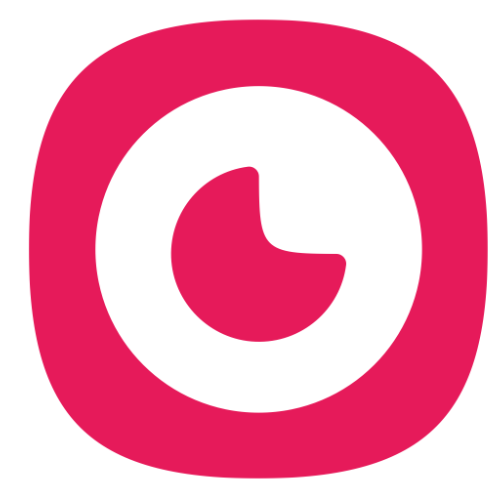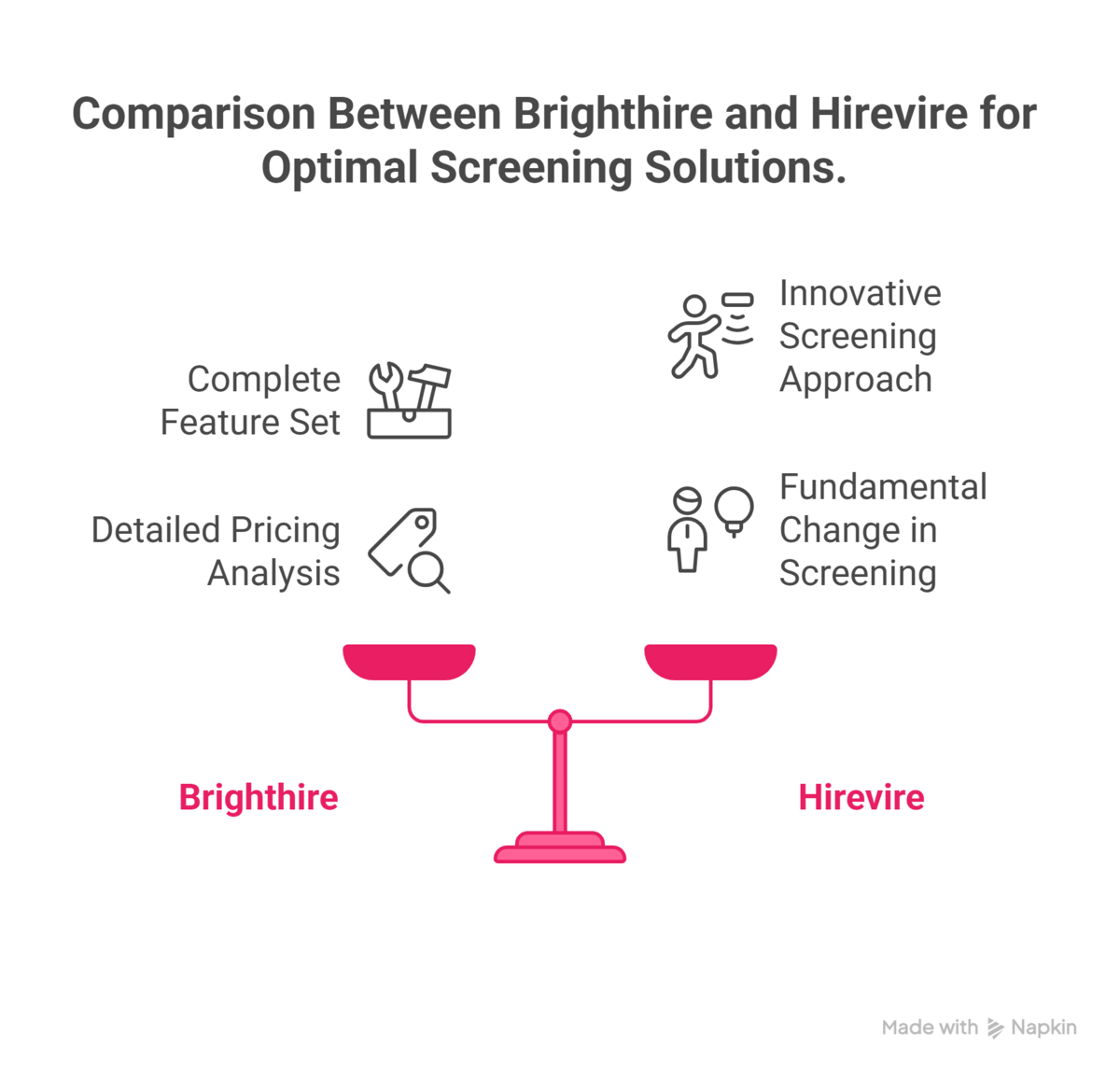Summary:
Hiring managers often face interview fatigue due to excessive, unnecessary interviews, which interview intelligence platforms like Brighthire aim to address through AI-powered transcription and note-taking. However, these tools don't reduce the number of interviews, merely documenting them better. Platforms like Hirevire offer a different solution by using asynchronous video screening to filter candidates more effectively, reducing the interview volume and saving significant time and resources. This approach helps identify the most suitable candidates before investing in live interviews, offering a more efficient hiring process.
Table of Contents
The Hidden Cost of Interview-First Hiring
Brighthire Features: What Does the Platform Actually Do?
AI Interview Assistant and Real-Time Transcription
Brighthire Interview Intelligence Platform Features
Brighthire Extension and Integration Capabilities
Collaboration and Team Sharing Features
Analytics and Reporting Capabilities
Brighthire Pricing: What Does It Cost?
What We Know About Brighthire Pricing
The Real Cost: Beyond Software
The Transparency Advantage: Cost Comparison
Brighthire Reviews: What Real Users Are Saying
Positive Feedback and Strengths
Common Complaints and Limitations
Why Smart Teams Are Rethinking the Interview-First Approach
The Fundamental Problem: Too Many Wrong Interviews
What Screening-First Actually Means
Why This Approach Works Better
Brighthire Competitors & Alternatives: Different Approaches to Solving the Hiring Challenge
Hirevire: The Clear Alternative to Brighthire
Hirevire’s Core Features Built for Screening Efficiency
Hirevire Pricing: Transparent and Cost-Effective
Real Success: What Users Report
Who Should Choose Hirevire Over Brighthire
Video: Understand Hirevire Better
Metaview: AI-Powered Interview Intelligence
Grain: Meeting Intelligence for Recruitment
The Pattern Across All Brighthire Competitors
Comparison Table: Hirevire vs. Brighthire vs. Alternatives
The Verdict: Choose the Right Solution for Your Problem
What is Brighthire and how does it work?
How much does Brighthire cost?
Does Brighthire integrate with applicant tracking systems?
Is Brighthire better than recording interviews manually?
Can Brighthire help reduce unconscious bias in hiring?
What's the difference between Brighthire and other interview tools?
How long does it take to implement Brighthire?
Does Brighthire work for remote hiring across time zones?
Can Brighthire replace phone screening interviews?
Your hiring manager just finished back-to-back interviews. Again.
Five candidates today, and by the third one, she's already mentally checked out. The transcripts and AI notes pile up, but the real problem isn't documentation—it's that three of those five interviews should never have happened in the first place.
This scenario plays out thousands of times daily across hiring teams. Interview intelligence platforms like Brighthire have emerged to help, promising AI-powered transcription, automated note-taking, and better collaboration. The technology is impressive. The notes are detailed. The collaboration features work well.
But here's what most teams discover too late: Better interview notes don't solve interview fatigue.
The Hidden Cost of Interview-First Hiring
According to industry research, recruiters spend 78% of their hiring time on administrative tasks, with the average cost-per-hire hovering around $4,700. LinkedIn's Future of Recruiting report reveals that organizations using AI-powered recruitment tools achieve a 75% reduction in time-to-hire—but that's only when they're using the right tools for the right problems.
Most hiring teams spend 60-70% of their interview time on candidates who were never going to be the right fit. They could have been filtered out with better screening. Instead, you're sitting through another 45-minute Zoom call, taking notes (even AI-generated ones), only to realize 10 minutes in that this person isn't qualified.
That's not an interview intelligence problem—that's an interview volume problem.
What This Review Covers
In this comprehensive Brighthire review, we'll explore:
- Brighthire's complete feature set and what it actually does well
- Real user feedback from teams using the platform daily
- Detailed pricing analysis including hidden costs most teams miss
- Why platforms like Hirevire are fundamentally changing how smart teams approach screening
- An honest comparison to help you solve the right problem
By the end, you'll understand not just whether Brighthire is right for your team, but whether you're solving the right problem entirely. Because the best interview isn't the one with perfect notes—it's the one you never had to conduct because you already knew the candidate wasn't the right fit.
What is Brighthire?
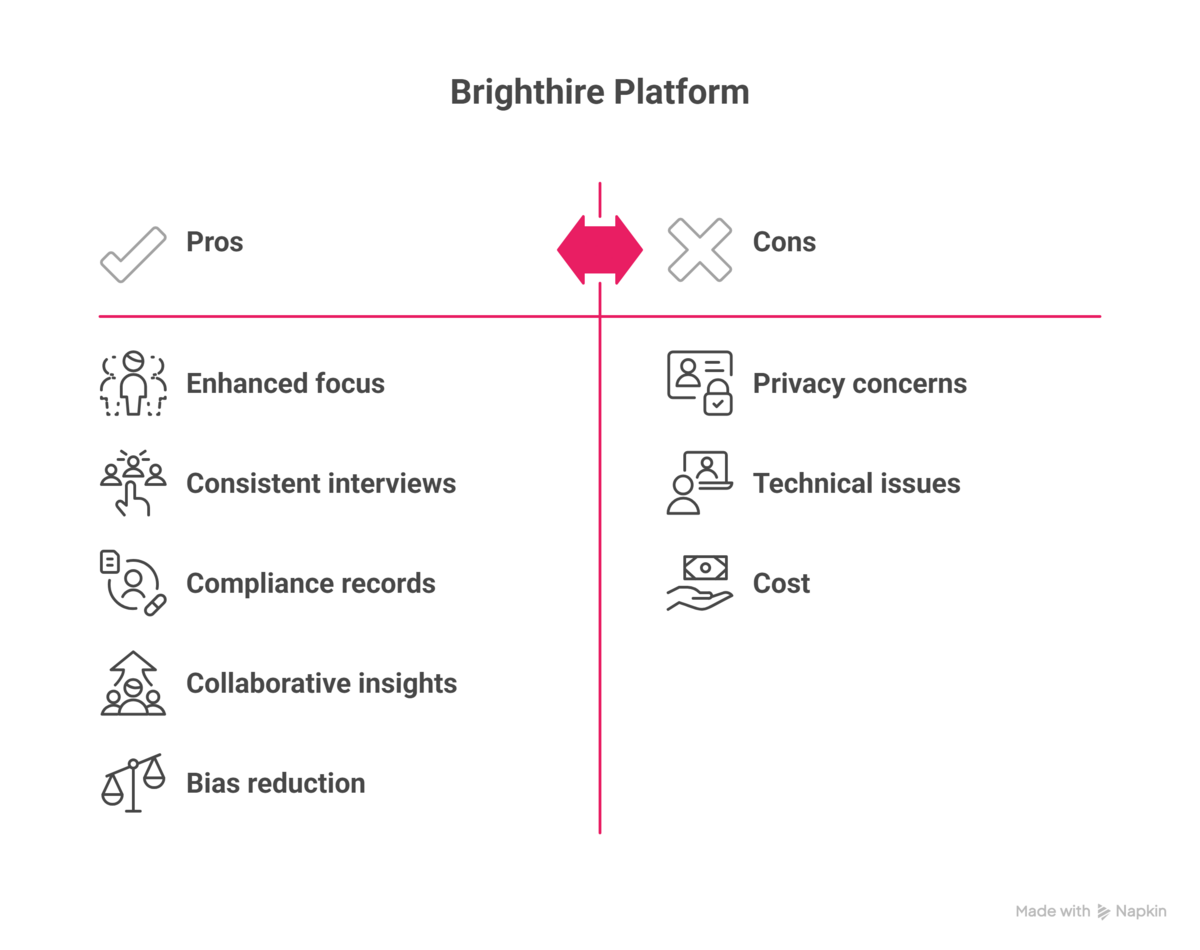
Brighthire is an AI-powered interview intelligence platform that helps hiring teams conduct better, more consistent interviews through real-time transcription, automated note-taking, and structured interview guides.
Founded to address the common challenge of interview documentation and quality, Brighthire positions itself as the "interview copilot" that ensures no important detail gets missed during candidate conversations.
How Brighthire Works
The platform integrates with popular video conferencing tools like Zoom, Google Meet, and Microsoft Teams through the Brighthire Chrome extension. Once installed, it automatically:
- Joins your scheduled interviews as an AI assistant
- Records conversations in real-time
- Transcribes everything said during the interview
- Captures key moments and generates structured notes
- Helps interviewers focus on the conversation rather than furiously typing
This allows interviewers to be more present during conversations, theoretically building better rapport with candidates while the AI handles documentation.
Who Uses Brighthire?
Primary Users: Recruiting teams, hiring managers, and HR departments at companies conducting structured interviews at scale—particularly those in regulated industries where interview documentation is critical.
The platform has gained traction among teams that recognize a challenge: as you conduct more interviews, maintaining consistency and quality becomes increasingly difficult. Brighthire's AI interview assistant promises to solve this by turning every interviewer into a more effective evaluator.
The Core Value Proposition
Brighthire assumes your interview process is sound but needs better execution and documentation. It helps:
- Standardize how interviews are conducted across different interviewers
- Ensure compliance through complete records of every conversation
- Enable collaboration by making interview insights easily shareable across hiring teams
- Improve consistency with structured guides and competency frameworks
For enterprise organizations with dedicated recruiting teams conducting 20+ interviews weekly, these benefits are tangible. Better documentation means better decisions, and structured approaches reduce bias.
The Underlying Assumption
Every approach has assumptions baked in. Brighthire's fundamental assumption is that every candidate who reaches the interview stage deserves a full 30-60 minute live conversation with your team.
The platform makes those conversations more productive and better documented—but it doesn't question whether they should happen at all.
This is where platforms like Hirevire take a different approach entirely. Instead of improving how you conduct 20 interviews per week, they help you identify the 6 candidates actually worth interviewing—saving you 14 hours of calendar time, not to mention the mental fatigue of context-switching between candidates all day.
The question worth asking: If you could evaluate communication skills, culture fit, and problem-solving ability through 5-minute asynchronous video responses, would you still choose to conduct 45-minute live screening calls with every candidate?
We'll explore this alternative approach in depth later, but it's worth keeping in mind as we evaluate Brighthire's features: every feature that makes interviews better is still built on the assumption that you need to conduct all those interviews.
Brighthire Features: What Does the Platform Actually Do?
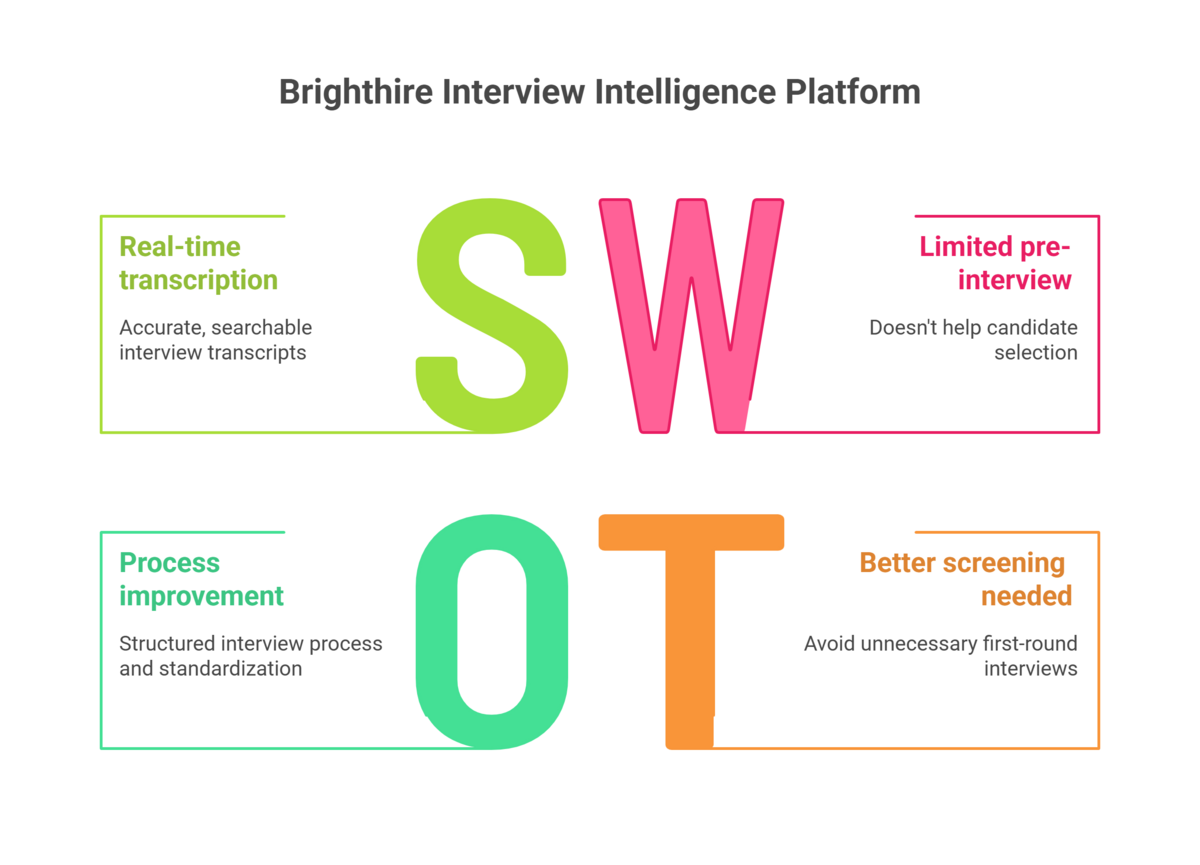
Understanding Brighthire features is essential when evaluating whether this brighthire interview intelligence platform fits your hiring needs. Let's break down what the brighthire ai actually delivers.
AI Interview Assistant and Real-Time Transcription
The heart of Brighthire's offering is its brighthire ai interview assistant that joins your video calls and provides real-time transcription. During interviews, the system captures every word spoken, creating searchable transcripts that can be reviewed later.
Key capabilities:
- Live transcription that appears during the interview
- Speaker identification to distinguish between interviewer and candidate
- Automatic timestamp generation for easy navigation
- Post-interview transcript editing and refinement
The transcription accuracy is generally strong for English speakers in good audio environments, though users report occasional challenges with heavy accents or technical terminology.
The real-time aspect means interviewers can focus on the conversation and building rapport rather than splitting attention between engagement and note-taking. However, the presence of a recording bot in meetings can make some candidates uncomfortable—a factor worth considering for candidate experience.
Brighthire Interview Intelligence Platform Features
Beyond transcription, the brighthire interview intelligence platform provides structured interview guides and question libraries designed to standardize the interview process. This is where the "intelligence" comes in—helping teams move from ad-hoc conversations to systematic candidate evaluation.
The platform offers:
- Pre-built interview templates for common roles
- Custom interview guide creation
- Competency-based question frameworks
- Skills assessment rubrics
- Automated interview summaries highlighting key responses
- AI-generated candidate evaluations based on responses
These features aim to reduce bias by ensuring every candidate faces the same questions evaluated against consistent criteria. For organizations serious about structured interviewing, these tools provide real value.
The limitation? All of this only helps during the interview. It doesn't help you determine which candidates deserve that interview time in the first place. Suppose you're screening for communication skills, problem-solving ability, or culture fit. In that case, you're still investing 45 minutes of synchronous time to evaluate things that could be assessed in 5 minutes of asynchronous video responses.
Brighthire Extension and Integration Capabilities
The brighthire extension is how most users interact with the platform after brighthire login. It installs in Chrome and connects to your calendar, automatically detecting upcoming interviews and preparing to join relevant video calls.
Integration highlights:
- Seamless connection with Zoom, Google Meet, and Microsoft Teams
- Calendar integration for automatic interview detection
- ATS integrations with systems like Greenhouse, Lever, and Workday
- Slack notifications for interview summaries
- API access for custom workflows
The brighthire extension makes the recording process relatively frictionless. However, users report occasional technical issues—the bot failing to join calls, recording glitches, or sync problems with ATS systems. These aren't constant problems but occur frequently enough that several brighthire reviews mention them.
Collaboration and Team Sharing Features
One of brighthire's strongest features is its collaboration capabilities for brighthire recruitment teams. Interview insights aren't trapped in one person's notes—they're available to the entire hiring team.
Collaboration tools include:
- Interview highlight reels and clips
- Comment threads on specific moments
- Shareable interview summaries
- Team scorecards and feedback collection
- Interview playback at variable speeds
For distributed hiring teams, these features enable better coordination. A hiring manager in New York can review clips from an interview conducted by a team member in San Francisco, leaving timestamped feedback on specific responses.
The collaboration features are genuinely useful—but they come with a hidden cost: the time investment required for multiple team members to review full interviews or even highlight reels. For high-volume hiring scenarios, this model doesn't scale well.
Compare this to asynchronous video screening where candidates submit 2-3 minute responses that multiple stakeholders can review in 10 minutes total, making decisions faster without coordination overhead.
Analytics and Reporting Capabilities
Brighthire provides analytics dashboards that help teams understand their interview processes at scale:
- Interview quality metrics
- Time-to-hire tracking
- Interviewer performance analytics
- Question effectiveness analysis
- Candidate comparison tools
- Compliance documentation
These analytics are valuable for enterprise teams focused on process improvement. The data can reveal which interviewers are most effective, which questions yield the best signal, and where bottlenecks exist in the hiring funnel.
The Missing Metric: What the brighthire interview intelligence platform's analytics won't tell you is how many of those interviews could have been avoided entirely with better screening upfront. If 60% of your first-round interviews end with "not a fit," the solution isn't better interview notes—it's better pre-interview filtering.
Brighthire Pricing: What Does It Cost?
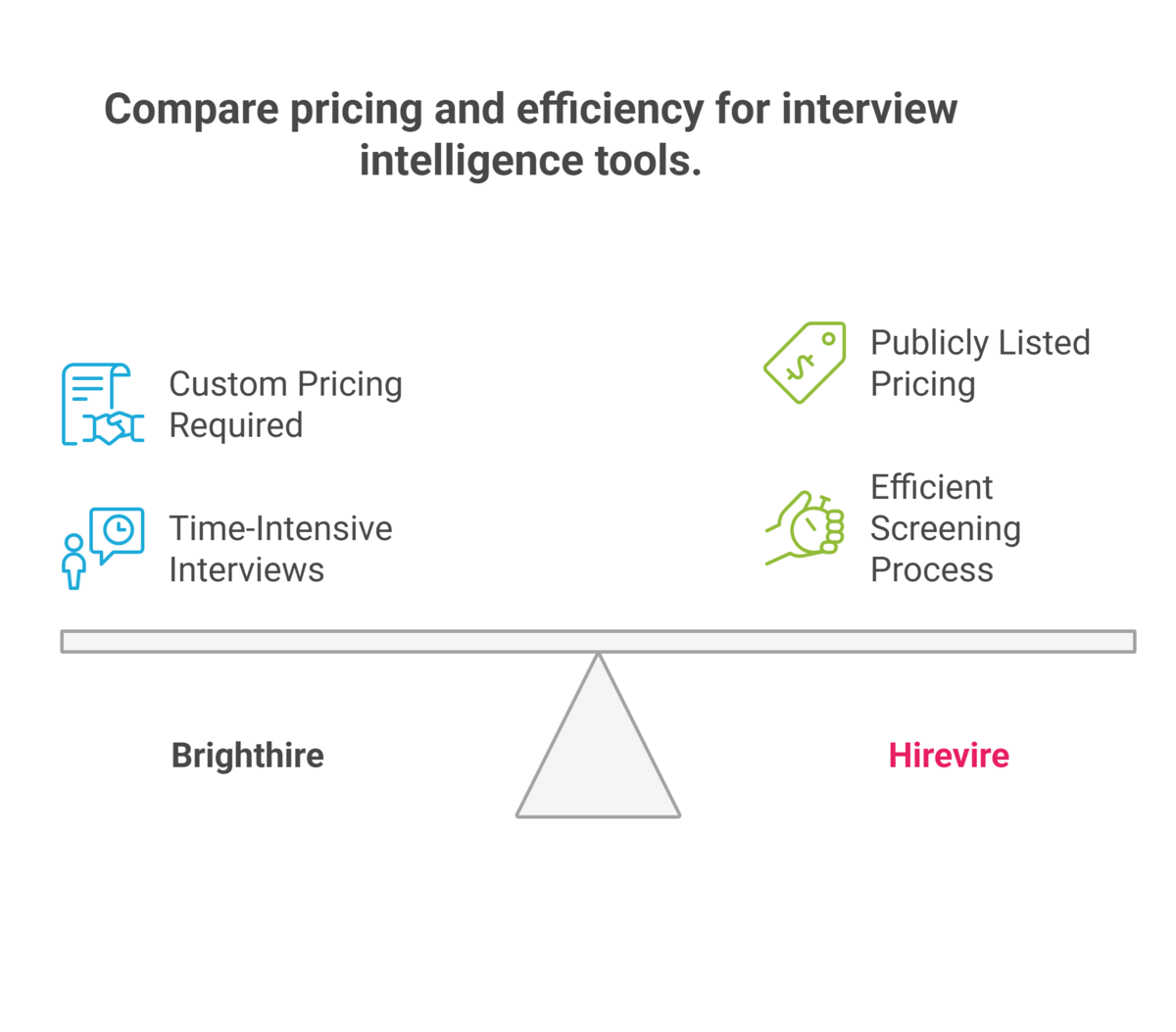
Here's the first challenge with evaluating brighthire cost: Brighthire doesn't publicly list their pricing. Like many enterprise-focused interview intelligence platforms, you need to contact sales for a custom quote.
What We Know About Brighthire Pricing
Based on available information and user reports:
Pricing Model: Brighthire pricing is based on organization headcount, not per-interviewer or per-interview. According to user insights, they recently shifted from billing by interviews and headcount to purely organizational headcount.
Enterprise Focus: Packages are based on team size, with options for rolling out to just recruiters, across a function/department, or full enterprise deployment.
Multi-Year Agreements: Users report getting better brighthire pricing through 3-year commitments with pricing tables that outline costs as you scale through user tiers.
No Public Transparency: Unlike tools with clear pricing pages, brighthire cost requires a sales conversation, demo, and custom quote—adding time to your evaluation process.
The Real Cost: Beyond Software
Whatever the brighthire pricing turns out to be, the software subscription is only part of the equation:
Interviewer Time Investment: Each interviewer still spends 30-60 minutes per brighthire interview. For a team conducting 20 interviews weekly at $100/hour loaded cost, that's $16,000 monthly in labor costs—likely far exceeding the software cost.
Coordination Overhead: Scheduling 20 live brighthire interviews across time zones consumes 2-4 hours weekly in calendar coordination alone.
Implementation Time: Expect 2-4 weeks for setup, training, and ATS integration before seeing value.
The Transparency Advantage: Cost Comparison
While Brighthire requires sales calls for pricing, alternatives like Hirevire list transparent pricing:
**Hirevire Approach:**
- $39/month (listed publicly, no sales call required)
- Screen 20 candidates asynchronously = 3 hours review time
- Interview only top 6 candidates = 12 hours
- Labor at $100/hour = $1,500
- Total: $1,539/month
Traditional Interview Intelligence:
- Software cost: Unknown until sales conversation
- 20 interviews × 2 hours = 40 hours
- Labor at $100/hour = $4,000
- Total: $4,000+ monthly (plus unknown software costs)
Even if brighthire cost is modest, the labor cost difference is substantial: eliminating 14 unnecessary interviews monthly saves $2,800 in interviewer time alone.
The ROI Question
Interview intelligence tools market themselves on preventing bad hires. If preventing one bad hire yearly (costing $50,000+) justifies the investment, that's valid.
But consider the alternative ROI: eliminating 12 unnecessary interviews weekly through better screening saves 24 hours at $100/hour = $2,400 weekly or $124,800 annually in labor costs alone.
The question isn't whether Brighthire provides value. It's whether better interview notes or fewer interviews delivers greater ROI.
This isn't about whether brighthire pricing is fair—it's about solving the expensive problem. Better documentation doesn't reduce time investment. Fewer interviews do.
Brighthire Reviews: What Real Users Are Saying
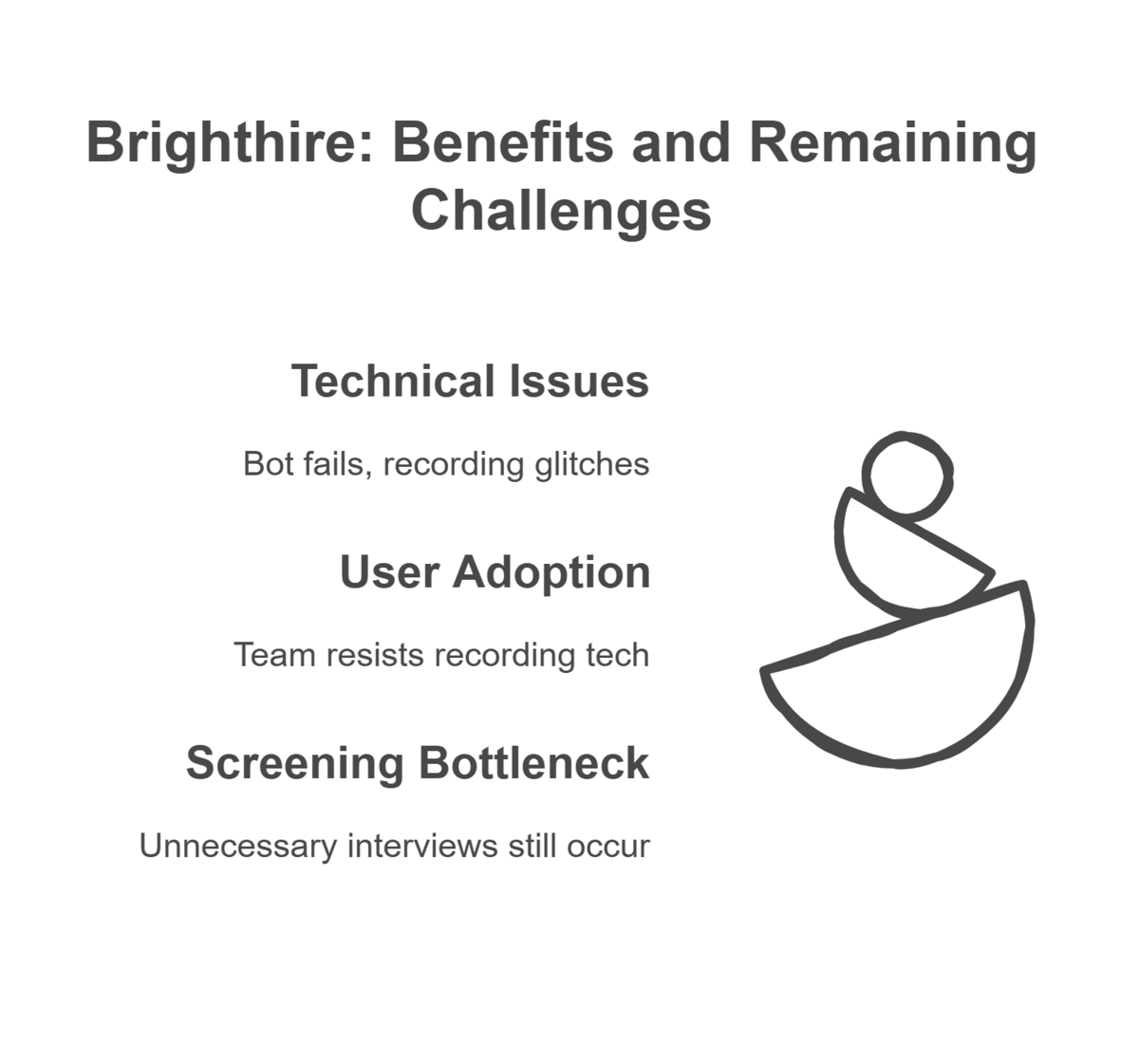
With a 4.9-star rating on G2 based on user feedback, brighthire reviews are generally positive. But reading between the lines reveals important insights about what the platform does well—and what problems it doesn't solve.
Positive Feedback and Strengths
Transcription Quality and Note-Taking
Multiple brighthire reviews praise the accuracy of transcription and automated note-taking. Users consistently mention being able to focus on conversations instead of frantically typing notes.
"I love being able to take timestamped notes in BrightHire live during my call. Makes remembering the call and the candidate and filling out the scorecard so much easier." — G2 Review
"I no longer feel I am getting behind on note-taking or missing bits and pieces of the conversation." — G2 Review
Interview Consistency and Structure
Teams report improved standardization across interviewers. The brighthire interview intelligence features help maintain consistent evaluation criteria, particularly valuable when scaling hiring.
"BrightHire has helped us take our recruitment to a new level." — G2 Review
Collaboration Benefits
The ability to share interview clips and specific moments with hiring managers receives frequent praise in brighthire reviews. Distributed teams find value in asynchronous review of interview highlights.
"It's also great to be able to share specific snippets of a call with a hiring manager or other member of the recruiting team." — G2 Review
Scaling High-Volume Hiring
Several reviewers mention using Brighthire successfully during intensive hiring periods with compressed timelines.
"Really helped us scale up our intensive Recalc Finance Accelerator interview process." — G2 Review
Common Complaints and Limitations
The Unspoken Problem: Interview Volume Remains Unchanged
The most revealing insight from brighthire reviews isn't about features—it's about what doesn't change. Users still report conducting the same number of interviews, just with better documentation. Better notes don't reduce the time burden.
Technical Issues
Multiple brighthire reviews mention occasional technical problems:
- The bot failing to join calls
- Recording glitches during important interviews
- Inability to turn off recording even as the host
- Sync issues with ATS systems
"One issue we sometimes still see even when being the host of an interview, is that occasionally I will not be able to turn off recording in my own brighthire interview." — G2 Review
User Adoption Challenges
Several reviewers note difficulty driving adoption within their organizations, particularly among team members uncomfortable with recording technology.
"Although I think BrightHire is super easy to use, it has been harder than I expected to drive user adoption of the tool in our company." — G2 Review
Doesn't Address the Screening Bottleneck
While not explicitly stated in most brighthire reviews, the pattern is clear: users praise documentation quality but still struggle with interview volume, scheduling coordination, and interviewer fatigue.
The platform makes each interview better—but doesn't help you avoid unnecessary interviews in the first place.
Why Smart Teams Are Rethinking the Interview-First Approach
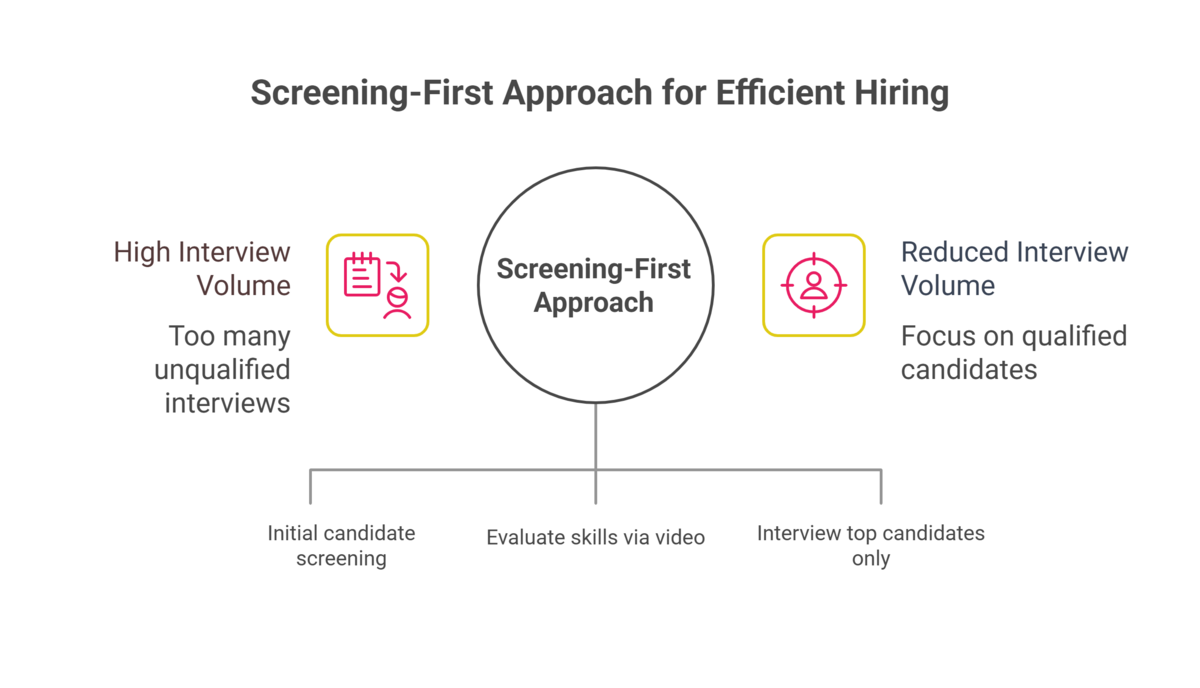
Before exploring brighthire competitors and alternatives, it's worth examining why interview intelligence tools—despite their sophistication—may not address your actual hiring challenge.
The Fundamental Problem: Too Many Wrong Interviews
Most hiring teams have an interview volume problem disguised as an interview quality problem. The symptoms look familiar:
- Your calendar is packed with back-to-back candidate calls
- You're exhausted by Wednesday from context-switching between candidates
- You realize within 10 minutes that half your interviews are with unqualified people
- You're conducting 20 first-round interviews to identify 2 candidates worth advancing
- Time-to-hire stretches to 6-8 weeks because scheduling is a nightmare
- Strong candidates drop out because your process takes too long
Brighthire interview intelligence makes each of those 20 interviews better documented and more consistent. But what if conducting 20 first-round interviews is the actual problem?
What Screening-First Actually Means
The screening-first philosophy inverts the traditional hiring funnel. This is what platforms like Hirevire enable:
Traditional Approach: Resume screen → Live interview → Assess skills → Second interview → Hire
Screening-First Approach (Hirevire Model): Resume screen → Async video screening → Live interview with top candidates → Hire
The critical insight: Communication skills, culture fit, problem-solving ability, and even many technical skills can be effectively evaluated through short asynchronous video responses.
Hirevire's automated screening software lets candidates record video, audio, or text responses to your questions on their schedule. You don't need a live 45-minute conversation to assess a candidate—you need a 3-minute video of them explaining their approach to a relevant challenge.
This is fundamentally different from brighthire's approach. While Brighthire helps you document interviews you're already conducting, Hirevire helps you avoid conducting unnecessary interviews in the first place.
The Time Mathematics
Research shows that 80% of candidates better understand job opportunities through video content, while 46% are more likely to consider jobs using video in their hiring process. But the real advantage is time efficiency:
20 candidates, traditional brighthire approach:
- Schedule 20 interviews (2 hours of calendar coordination)
- Conduct 20 × 45-minute interviews = 15 hours
- Write notes for 20 interviews = 3 hours
- Total time: 20 hours
20 candidates, Hirevire screening-first approach:
- Send screening questions to 20 candidates via Hirevire = 15 minutes
- Review 20 × 3-minute video responses = 1 hour
- Conduct 6 interviews with top candidates = 4.5 hours
- Total time: 5.75 hours
Time saved: 14.25 hours per week—nearly two full workdays returned to your calendar every week. This is the difference between optimizing interviews (Brighthire) and eliminating unnecessary ones (Hirevire).
Why This Approach Works Better
Beyond time savings, screening-first improves hiring outcomes:
Better Signal: Candidates can think through their responses and demonstrate skills clearly. Live interviews often test performance anxiety as much as competence.
No Scheduling Theater: Stop playing calendar Tetris across time zones. Candidates respond when convenient, you review when convenient.
Faster Time-to-Hire: When you're not waiting a week for interview availability, you move faster. According to LinkedIn research, organizations using AI-powered recruitment tools achieve a 75% reduction in time-to-hire.
Reduced Bias: Standardized questions and asynchronous review let you evaluate candidates on consistent criteria without real-time biases.
Better Candidate Experience: Candidates appreciate not taking time off work for preliminary screening calls. They can respond thoughtfully on their schedule.
The Market Shift
Deloitte's research reveals teams using AI recruitment technology boost their productivity by 40%. But the real gains come from tools that prevent unnecessary work, not just document it better.
The video interviewing software market is projected to grow from $250.06 million in 2022 to $891.86 million by 2030—a 17.2% compound annual growth rate. This explosive growth reflects a fundamental shift: companies are realizing that better screening prevents problems, while better interview notes only document them.
This is why platforms like Hirevire are increasingly chosen as the alternative to brighthire—they solve the root problem of interview volume rather than optimizing around it. With features like multi-format response collection (video, audio, file, text), AI transcription in 90+ languages, and automated workflow management, Hirevire represents a fundamentally different approach to the hiring challenge.
The question smart teams are asking isn't "How do we document our 20 weekly interviews better?" It's "How do we reduce those 20 interviews to 6 truly qualified candidates?"
Brighthire Competitors & Alternatives: Different Approaches to Solving the Hiring Challenge
When evaluating alternatives to brighthire, you'll find two distinct categories: tools that optimize live interviews (like Brighthire) and tools that eliminate unnecessary interviews through better screening. The choice between them depends on whether you're solving an execution problem or a volume problem.
Hirevire: The Clear Alternative to Brighthire
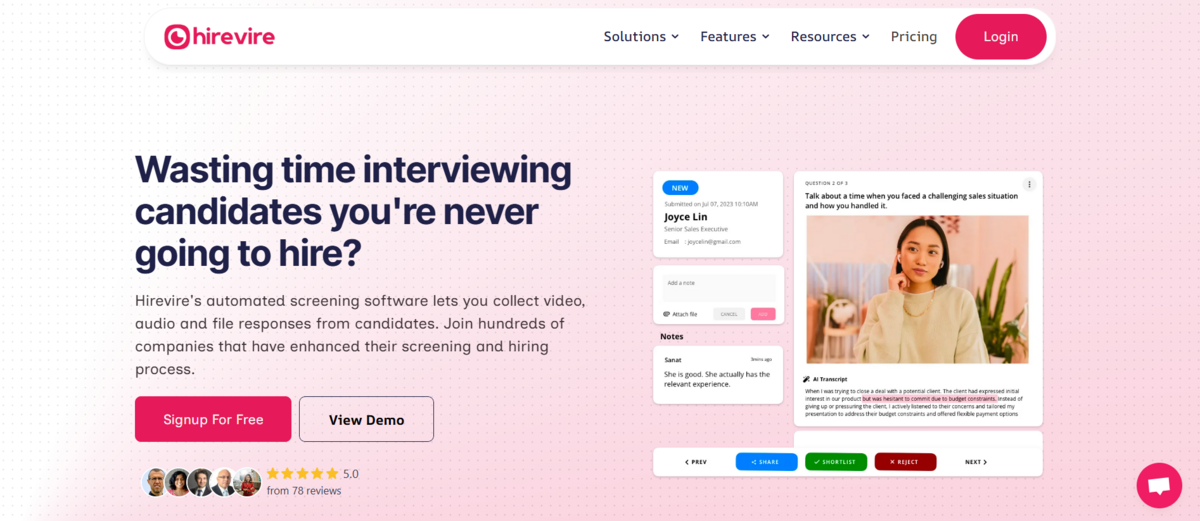
Best for: Any hiring team conducting more than 5 first-round interviews weekly
If you've read this far, the pattern is clear: Hirevire isn't just a brighthire competitor—it's a fundamentally different approach that solves the actual problem most teams face. While brighthire ai helps you conduct better live interviews, Hirevire helps you avoid conducting unnecessary interviews entirely.
What Makes Hirevire Different
Hirevire enables asynchronous video screening where candidates respond to your interview questions on their schedule, and you review those responses on yours—identifying top candidates before investing in any live calls.
This isn't about cutting corners. You can accurately evaluate communication skills, technical knowledge, culture fit, and problem-solving ability through 3-5 minute video responses without requiring 45 minutes of synchronous time.
Real Example: A candidate explaining their approach to solving a technical challenge in a 3-minute video response often reveals more signal than 30 minutes of live small talk. You see how they structure thinking, communicate complex ideas, and demonstrate expertise—all without scheduling a single meeting.
Hirevire’s Core Features Built for Screening Efficiency
Multi-Format Response Collection
Hirevire captures comprehensive candidate insights through multiple formats:
- Video responses: Evaluate communication skills, presence, and thought process
- Audio responses: For roles where verbal communication matters more than visual presentation
- File uploads: Accept portfolios, work samples, or documentation (unlimited size/format)
- Rich text responses: Detailed written answers for complex technical assessments
A designer can show portfolio work while explaining their process. A developer can walk through code while describing their approach. A salesperson can demonstrate their pitch. All without scheduling synchronous meetings.
AI Transcription in 90+ Languages
Hirevire provides AI transcription for video and audio responses in over 90 languages—critical for international brighthire recruitment scenarios. Consider coordinating live interviews across time zones: your candidate is in Singapore, your hiring manager in New York, your technical lead in London. Finding a single hour that works might take two weeks.
With Hirevire, the candidate responds during Singapore business hours, New York reviews the next morning, London reviews that afternoon. Decision made in 48 hours instead of two weeks.
Automated Workflow Management
Hirevire automates the entire screening workflow—something interview intelligence tools can't do because live interviews require manual coordination:
- Automated emails for shortlisted and rejected candidates
- Bulk candidate invitation via CSV upload
- Export to CSV for ATS integration
- Analytics tracking completion rates
- Custom branding with your logo and colors
A single recruiter can screen 100+ candidates in the time it takes to conduct 10 live interviews—a 10× efficiency gain that fundamentally changes what's possible for small teams.
Integration Ecosystem
- Zapier integration: 5,000+ apps including every major ATS
- Make/Integrately: 2,000+ additional apps
- Webhook support: Custom integrations for any workflow
- Custom domain: Maintain brand consistency
Hirevire Pricing: Transparent and Cost-Effective
$39/month with unlimited video responses, all features included, multiple team members, all integrations, and custom branding.
Compare this to brighthire pricing (requires sales call for quote) plus the labor cost difference:
Total Cost Analysis:
Brighthire Approach (20 candidates):
- Software: Unknown (contact sales)
- Interviewer time: 40 hours × $100/hour = $4,000
- Monthly total: $4,000+ (plus unknown software costs)
Hirevire Approach (20 candidates):*
- Software: $39/month
- Review time: 2 hours × $100/hour = $200
- Interview time (top 6): 12 hours × $100/hour = $1,200
- Monthly total: $1,439
Savings: $2,500+ monthly (even before counting unknown Brighthire software costs)—not including the opportunity cost of time returned to building your business.
Hirevire Ratings
- G2: 4.7/5 stars (25+ reviews)
- Capterra: 5/5 stars (20+ reviews)
- AppSumo: 4.9/5 (based on 70+ reviews)
Real Success: What Users Report
Users consistently report:
- 70% reduction in live interviews while maintaining or improving hire quality
- Faster time-to-hire: From "wait two weeks for availability" to "review within 24 hours"
- Better candidate experience: Candidates prefer responding on their schedule
- Higher team satisfaction: Dramatically reduced interview fatigue
- Improved hiring quality: Evaluate substance rather than live performance anxiety
Who Should Choose Hirevire Over Brighthire
Choose Hirevire if:
- You're conducting 10+ first-round screening interviews weekly
- You realize within 10 minutes that many candidates aren't qualified
- Your calendar is constantly overbooked with candidate calls
- You're hiring across time zones where scheduling is challenging
- Cost-effectiveness matters
- You're a small team juggling multiple responsibilities
- You need to move faster in a competitive hiring market
The choice isn't really between brighthire vs other interview intelligence tools. It's about whether you're making interviews better or eliminating unnecessary interviews. One is optimization. The other is transformation.
Video: Understand Hirevire Better
Other Brighthire Competitors
For teams committed to the live-interview approach, other brighthire competitors exist in the interview intelligence space:
Metaview: AI-Powered Interview Intelligence
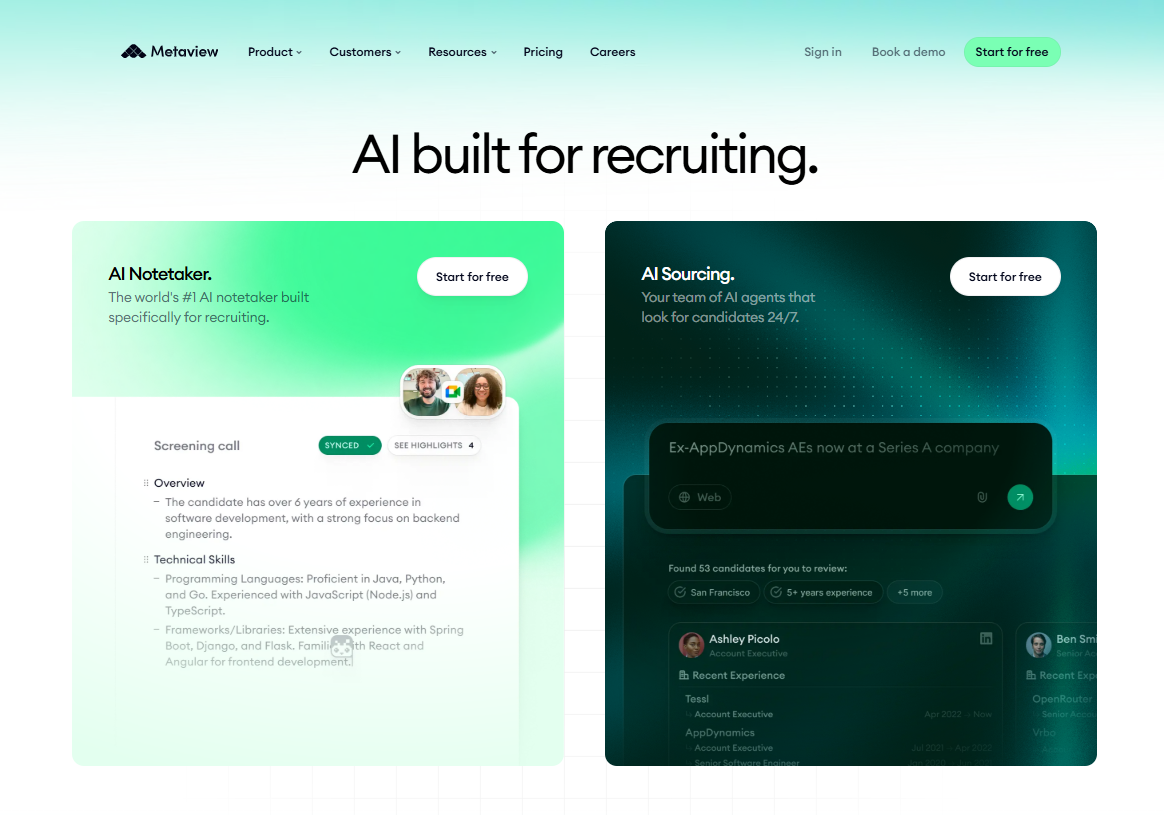
Metaview positions itself as the "#1 AI scribe for recruiting," used by over 2,000 companies including Brex, Deel, HelloFresh, and Quora. Like Brighthire, it focuses on automating interview note-taking and providing structured insights from live conversations.
Key Features
- AI-generated interview notes with customizable templates
- Real-time transcription during video and phone calls
- Automatic scorecard population
- Integration with major ATS platforms (Greenhouse, Lever)
- Works with Zoom, Google Meet, Microsoft Teams, and phone calls
- AI Assistant that can answer questions about candidates in your pipeline
- GDPR and CCPA compliant
Ratings
- G2: 4.8/5 stars (131+ reviews)
- Users report saving 10+ hours per week on note-taking
Pricing
- Free plan: 25 conversations per month
- Pro plan: $50 per user/month (billed annually)
- Enterprise: Custom pricing
User Feedback
"I can confidently say that if you're not using Metaview, you are wasting at least 10+ hours a week and giving your candidates a worse experience." — G2 Review
"Metaview catches nuances that might otherwise slip through the cracks, providing us with rich, AI-analyzed, interview content." — User Review
Limitations
Users report occasional inaccuracies in summaries requiring manual editing, integration issues with some ATS systems, and language limitations with accents. Most critically: like Brighthire, Metaview doesn't reduce interview volume—it just documents those interviews better. You're still conducting the same 20 interviews weekly; they're just better organized.
Best For
Teams already conducting highly-qualified candidate interviews who need better documentation and collaboration tools. Not ideal for teams drowning in unnecessary screening calls.
Grain: Meeting Intelligence for Recruitment
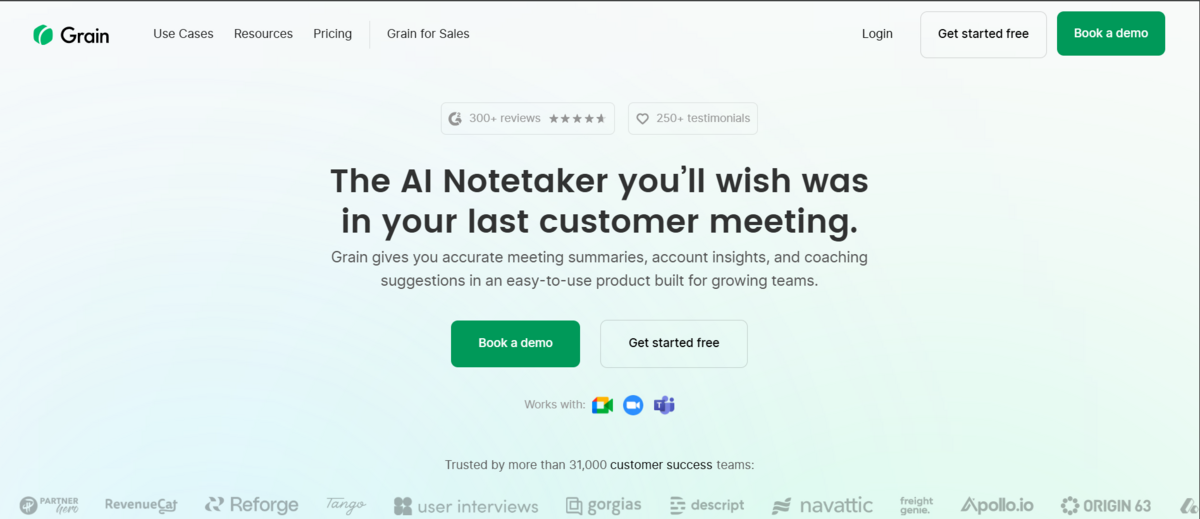
Grain takes a broader approach than Brighthire or Metaview—it's a general meeting intelligence platform that works well for interviews but isn't recruitment-specific. This makes it more versatile but less specialized for hiring workflows.
Key Features
- AI-powered meeting recording and transcription
- Video clip creation and sharing
- Searchable transcripts and meeting libraries
- Real-time note-taking with tags and highlights
- CRM auto-sync (HubSpot, Salesforce)
- Playlists and stories for organizing meeting collections
- Action item identification
- Integration with Slack, Zapier, and major platforms
Ratings
- G2: 4.6/5 stars (290+ reviews)
Pricing
- Free plan: Limited recordings
- Basic: $15/month
- Business: $29/month per user
- Enterprise: Custom pricing
User Feedback
"The real-time transcription is highly accurate, and AI summaries save time. Searchable transcripts make reviewing meetings effortless." — G2 Review
"Grain makes sure that everyone has access to what our customers are saying and not just customer-facing teams." — User Review
Limitations
Cannot record meetings without displaying a bot (which can make candidates uncomfortable), no mobile app for in-person meetings, doesn't provide insights across multiple meetings, and lacks automated weekly summaries. Like other interview intelligence tools, Grain optimizes the meetings you're having—it doesn't help you have fewer meetings.
Best For
Teams that want one tool for all meeting types (sales calls, customer interviews, internal meetings, and recruiting). Less ideal for teams needing recruitment-specific features or those struggling with interview volume.
The Pattern Across All Brighthire Competitors
All brighthire competitors in the interview intelligence space—Metaview, Grain, and others—share the same fundamental assumption: that conducting extensive live interviews is necessary and the challenge is executing them better.
They deliver on that promise. The transcription is accurate. The notes are organized. The collaboration features work well. But none question whether conducting 20 first-round screening interviews weekly is the actual problem.
This is why more teams are choosing screening-first platforms like Hirevire over interview intelligence tools—they're solving a different problem entirely. Instead of asking "How do we document our interviews better?" they're asking "How do we avoid conducting interviews with candidates who aren't qualified?"
The time savings difference is dramatic: interview intelligence might save you 2-3 hours weekly on note-taking. Screening-first approaches save you 14+ hours weekly by eliminating unnecessary interviews. It's not optimization—it's transformation.
Comparison Table: Hirevire vs. Brighthire vs. Alternatives
| Feature | Hirevire | Brighthire | Metaview | Grain |
|---|---|---|---|---|
| Primary Purpose | Async video screening | Live interview intelligence | Live interview notes | Meeting intelligence |
| Time Per Candidate | 5-10 minutes | 30-60 minutes | 30-60 minutes | 30-60 minutes |
| Pricing | $39/month (team) | Contact sales (custom) | $50/user/month | $16.99-30/user/month |
| Interview Volume Reduction | Yes (60-70%) | No | No | No |
| Scheduling Required | No | Yes | Yes | Yes |
| Multi-language Support | 90+ languages | Limited | Limited | Limited |
| G2 Rating | 4.7/5 | 4.9/5 | 4.6/5 | 4.3/5 |
| Best For | High-volume screening | Enterprise documentation | Structured interviews | All meeting types |
| ROI for Small Teams | Excellent | Poor | Moderate | Good |
| Scalability | 100+ candidates/week | Limited by calendar | Limited by calendar | Limited by calendar |
The Verdict: Choose the Right Solution for Your Problem
Brighthire is a capable interview intelligence platform. The brighthire ai delivers accurate transcription, the collaboration features work well, and for enterprise teams conducting extensive structured interviews with qualified candidates, it provides genuine value.
But for most hiring teams, the problem isn't interview execution—it's interview volume.
If you're conducting 15+ first-round screening interviews weekly and realizing within 10 minutes that most candidates aren't qualified, you don't need better interview notes. You need fewer interviews.
This is where Hirevire transforms the equation. At $39/month with unlimited screening, AI transcription in 90+ languages, and automated workflows, it eliminates 60-70% of unnecessary interviews while improving hire quality. The time savings—14+ hours weekly—aren't just about efficiency. They're about getting your life back.
The question isn't whether Brighthire is good. It's whether you're solving the right problem.
Ready to eliminate unnecessary interviews and reclaim your calendar? Start with Hirevire's transparent pricing and see how many screening calls you can avoid while making better hires.
Frequently Asked Questions
What is Brighthire and how does it work?
Brighthire is an AI-powered interview intelligence platform that records and transcribes live job interviews, automatically generating notes while you conduct video calls. The brighthire extension joins Zoom, Google Meet, or Microsoft Teams meetings to capture conversations. While this improves interview documentation, many teams find they still need a solution for the earlier problem: determining which candidates deserve that live interview time in the first place. Platforms like Hirevire address this by screening candidates through asynchronous video responses before you invest in synchronous interviews.
How much does Brighthire cost?
Brighthire doesn't publicly list pricing—you need to contact sales for a custom quote based on organizational headcount. This lack of transparency can extend your evaluation process. In contrast, screening platforms like Hirevire offer transparent pricing at $39/month with all features included, making it easier to assess ROI upfront. When evaluating brighthire cost, remember the hidden expense: interviewer time conducting 20+ weekly screening calls at 30-60 minutes each.
Does Brighthire integrate with applicant tracking systems?
Yes, Brighthire integrates with major ATS platforms like Greenhouse, Lever, and Workday. However, integration setup typically takes 2-4 weeks. If seamless workflow integration matters, consider that Hirevire connects with 5,000+ apps through Zapier and 2,000+ through Make, often with simpler setup. The real integration question isn't just which tools connect, but whether your workflow should start with async screening (Hirevire) or jump straight to documented live interviews (Brighthire).
Is Brighthire better than recording interviews manually?
Brighthire is significantly better than manual interview recording and note-taking—it saves 2-3 hours weekly on documentation. However, the bigger question is whether better documentation or fewer interviews saves more time. Hirevire's async screening approach saves 10-15 hours weekly by eliminating 60-70% of unnecessary first-round interviews. For most teams drowning in screening calls, preventing interviews saves exponentially more time than documenting them better.
Can Brighthire help reduce unconscious bias in hiring?
Brighthire helps reduce bias by standardizing interview questions and providing objective records of conversations. However, bias reduction starts earlier in the funnel. Asynchronous video screening through Hirevire allows all candidates to answer identical questions in a standardized format, reviewed without real-time impression bias. You can evaluate multiple candidates back-to-back on consistent criteria before bias-prone live interactions occur. The most effective bias reduction combines async screening (Hirevire) for initial evaluation with documented live interviews (Brighthire) for finalists.
What's the difference between Brighthire and other interview tools?
Brighthire focuses specifically on interview intelligence—documenting and analyzing live interviews. Competitors like Metaview ($50/user/month) and Grain ($16.99-30/user/month) offer similar capabilities. The fundamental difference isn't between interview intelligence tools, but between interview intelligence and interview screening. Tools like Hirevire don't make interviews better—they help you avoid unnecessary interviews entirely through asynchronous candidate evaluation, solving a different problem with dramatically better time ROI.
How long does it take to implement Brighthire?
Brighthire implementation typically requires 2-4 weeks for setup, training, ATS integration, and team adoption. Some users report challenges driving adoption among team members uncomfortable with recording. In contrast, screening platforms like Hirevire can be operational in under an hour—create questions, send to candidates, start reviewing responses. If speed-to-value matters and your bottleneck is interview volume rather than interview quality, faster implementation of a screening solution delivers ROI sooner.
Does Brighthire work for remote hiring across time zones?
Brighthire works for remote interviews but doesn't solve the time zone coordination challenge—you still need to find overlapping availability between candidates and interviewers across different time zones, which can delay hiring by weeks. This is where asynchronous approaches like Hirevire excel: candidates in Singapore respond during their business hours, teams in New York review the next morning, and decisions happen in 48 hours instead of two weeks of scheduling gymnastics.
Can Brighthire replace phone screening interviews?
No, Brighthire is designed to document and improve interviews you're already conducting, not replace them. It makes live interviews better, but doesn't reduce the number of interviews needed. Suppose you're looking to eliminate phone screening interviews. In that case, that requires a different approach—asynchronous video screening through platforms like Hirevire, where candidates record responses to screening questions at their convenience, and you review them in a fraction of the time a live call would take.
Is Brighthire worth it for startups and small teams?
For most startups and small teams, brighthire's enterprise pricing model and focus on optimizing high-volume live interviews doesn't align well with resource constraints. Small teams typically see better ROI from reducing interview volume through screening platforms like Hirevire ($39/month) rather than documenting extensive interviews better. Hirevire's approach lets a single founder or HR person screen 50+ candidates in the time it would take to conduct 10 live calls—a game-changer when everyone wears multiple hats and interview time directly competes with building the product.
